[ad_1]
Life was hell for Jews within the Polish capital, Warsaw, 80 years in the past. Ever since Nazi Germany had invaded Poland in September 1939, they’d been subjected to fixed persecution by the occupiers, and from November 1940 onward they had been confined to the Warsaw Ghetto within the northwest of town. As much as 450,000 males, girls, and kids lived crammed collectively behind the excessive partitions of the ghetto. Round 100,000 individuals had died of starvation or illness, or been killed in abstract executions.
Leaving the sealed-off district with out permission was punishable by dying, as was offering any type of exterior assist to the inhabitants of the ghetto. The guards would even shoot little kids who smuggled in meals or coal. Emaciated corpses mendacity by the facet of the street grew to become a part of every day life.
SS officer Hermann Höfle gave the order to kill
Nearly a 3rd of the inhabitants of the Polish capital was made up of Jews earlier than World Struggle II. That they had been an integral a part of town on the Vistula for hundreds of years. July 22, 1942, would mark a tragic turning level.
On at the present time, Adam Czerniakow, an engineer and native politician, whom the Nazis had compelled to turn into the pinnacle of the Warsaw Ghetto Jewish Council, wrote the next in his diary: “At 10 o’clock, Sturmbannführer Höfle appeared along with his individuals. [ … ] We had been instructed that each one Jews, regardless of intercourse and age — with sure exceptions — are to be deported to the East.” Daily, Czerniakow was to organize 6,000 individuals from the ghetto for deportation. The SS later elevated that every day goal to 10,000.
On July 23, Czerniakow wrote a farewell letter to his spouse: “They’re demanding that I kill the kids of my individuals with my very own fingers. There may be nothing for me to do however to die.” He ended his life with a cyanide capsule — however his dying did nothing to cease the extermination.
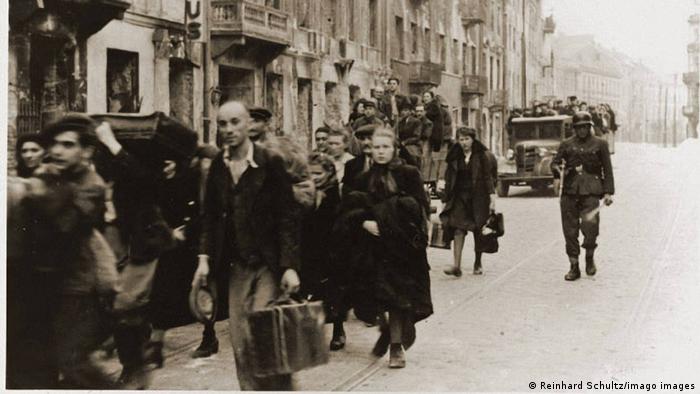
From November 1940, Jews had been compelled to maneuver into the overcrowded Warsaw Ghetto, from which they had been later deported
The fuel chambers of Treblinka
The Nazis carried out the deportations with the utmost brutality, with a purpose to nip any try at resistance within the bud. Every home was surrounded; its occupants had been whipped and overwhelmed as they had been pushed out into the courtyard, then taken to the so-called “Umschlagplatz” (“assortment level”) on the station.
Individuals had been taken to the Treblinka extermination camp in cattle vehicles. After an extended and depressing journey, they normally arrived solely to be killed within the fuel chambers that very same day. The Germans disguised their operation, “Grossaktion” Warsaw, as “resettlement within the East,” however many quickly realized that they had been being despatched to their deaths.
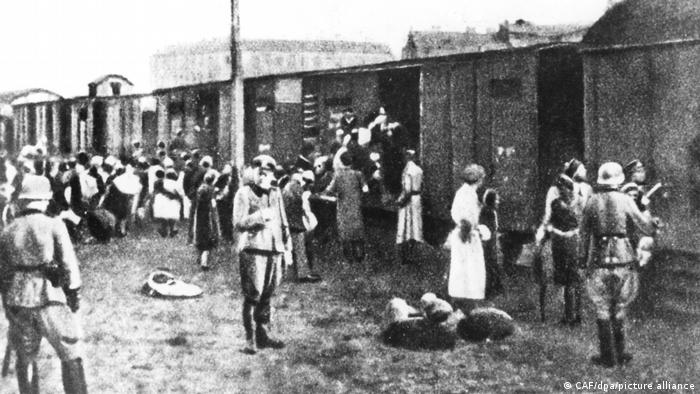
Daily, hundreds of Warsaw Jews had been crammed into cattle vehicles and brought to Treblinka. Most had been gassed on arrival
Janusz Korczak died alongside his kids
In early August, Janusz Korczak, a revered physician, instructor and the director of an orphanage, arrived on the assortment level together with the kids in his care. He had had a probability to flee the ghetto, however had refused to desert the kids who had been entrusted to him. To allay their fears, he instructed them that they had been occurring a “journey to the countryside” — and went with them to the fuel chamber, as did his colleague Stefania Wilczynska.
Adina Blady-Szwajgier, a pediatric nurse, selected a distinct path: She gave a few of her younger sufferers morphine, killing them earlier than they might fall into the Nazis’ fingers.
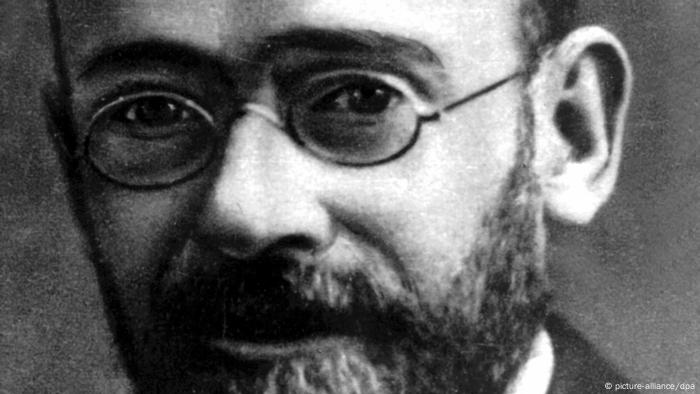
Janusz Korczak, the pinnacle of the Jewish orphanage in Warsaw, selected to remain and die with the kids in his care
Based on German sources, greater than 250,000 Jews had been deported to Treblinka in simply two months; Jewish sources say the quantity was nearer to 300,000. A number of thousand individuals who had been too outdated or too sick to journey had been taken to Warsaw’s Jewish cemetery and shot.
Round 35,000 Jews had been left alive, and despatched to work in factories. Between 20,000 and 25,000 individuals escaped deportation, and continued to reside “illegally” in what was left of the ghetto. In April 1943, those that remained had been scheduled for deportation, which sparked the Warsaw Ghetto Rebellion, during which 13,000 Jews had been killed. Those that remained had been despatched to Treblinka and different camps. As an eyewitness wrote on the time: “Jewish Warsaw has ceased to exist.” The most important Jewish group in Europe had been erased.
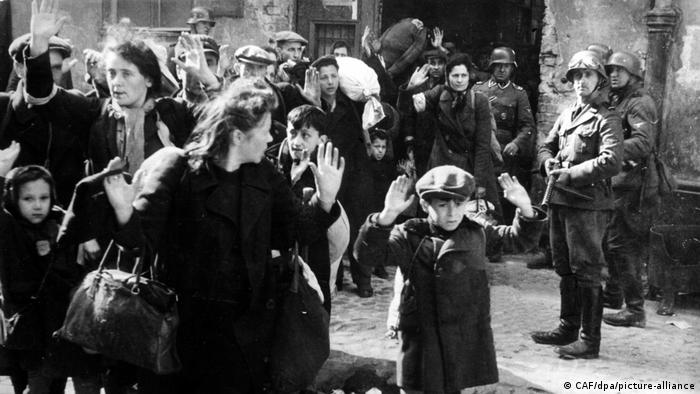
Individuals had been pushed out of their homes, typically brutally, and rounded up for deportation
Globocnik’s evil plan
The homicide of the Warsaw Jews was, nonetheless, solely a part of the grand plan, code-named “Operation Reinhardt,” to exterminate all Jews in German-occupied Poland.
As early as October 13, 1941, Heinrich Himmler had instructed Odilo Globocnik, the pinnacle of the SS and police within the Lublin area, to homicide the Jews in his space of management, the south of occupied Poland. Globocnik instantly began to assemble the primary of a number of extermination camps — Belzec. Later, two extra had been constructed — Sobibor and Treblinka — the place victims had been gassed instantly on arrival. From 1943 onward, Majdanek close to Lublin additionally served as an extermination camp.
The killing continued till November 1943, when these camps had been dismantled and disguised, and the final remaining prisoners shot. The Holocaust researcher Stephan Lehnstaedt estimates that the overall variety of victims of Operation Reinhardt was no less than 1.8 million, maybe as many as two million. The Nazi extermination of European Jews, which later grew to become generally known as the Holocaust, continued till 1945. A complete of six million Jews had been killed. A whole bunch of hundreds of Sinti and Roma had been additionally murdered.
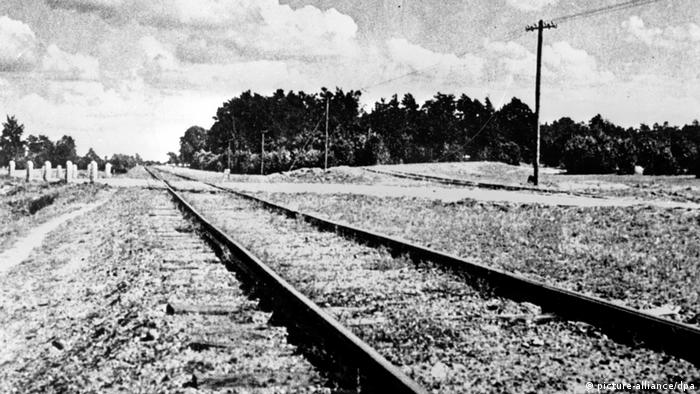
These prepare tracks led into the Treblinka extermination camp. The Nazis later tried to disguise their crimes
Nearly no survivors of the forgotten camps
Solely about 150 individuals in whole survived Belzec, Sobibor, and Treblinka. For a few years, these extermination camps had been nearly forgotten; the camp at Auschwitz-Birkenau grew to become the principle image of the Holocaust. Solely step by step did the Operation Reinhardt websites return to public consciousness, but it surely was not till 1988 {that a} memorial was erected on the former “Umschlagplatz” the place the Warsaw Jews had been assembled for deportation.
That is the place the march to commemorate the beginning of Operation Reinhardt will start on July 22. From the station, it should progress to Nalewski Road, as soon as the center of Warsaw’s Jewish quarter. Immediately, all that continues to be from the time of the ghetto and the deportation are the cobblestones and the disused tramlines.
This text was translated from German.
[ad_2]
Source link





